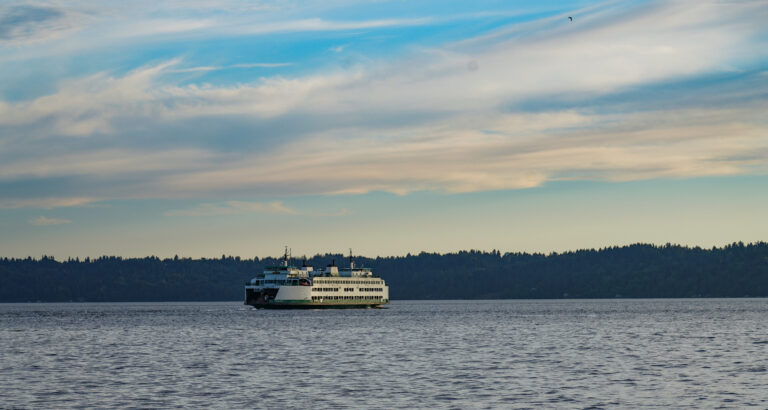When an orca hunts salmon, it clicks and buzzes.
Published on September 13, 2024

Reported by John Ryan for KUOW/NPR
It sends a beam of sounds from its nasal passages into the murky depths in hopes that the sound waves will bounce back and reveal the location of its next nutritious meal.
Those hopes are often dashed when noise from passing vessels drowns out orcas’ sonar signals.
A new study reveals how vessel noise masks orcas’ sonar at every stage of the hunt—from searching, to pursuing, to capturing prey.
“As noise is increasing, the orcas are actually spending more effort trying to find fish,” University of Washington whale researcher Jennifer Tennessen said. “These are animals that rely entirely on sound to locate and pursue and ultimately catch their prey.”
In noisy conditions, orcas spent more time and energy scanning the sea for fish, the new study in the journal Global Change Biology found. When orcas did locate a potential meal despite the noise, they were less likely to successfully catch it.
Females were especially affected: They would often not bother to chase prey they had detected in noisy conditions—when the odds of a successful hunt are lower.
Using sounds and data from recorders temporarily suction-cupped onto the backs of orcas in Washington and British Columbia, researchers were able to hear what whales hear as they hunt.
Getting even a brief glimpse into the hidden world of a hunting orca is no small feat.
After getting permits to closely approach this protected species, researchers headed out in small boats. Once an orca was nearby, a researcher stood on the bow with a 23-foot carbon-fiber pole. As a whale momentarily surfaced, the researcher aimed the far end of the pole to press an electronic tag onto the whale near its dorsal fin.
For a few hours, the tag’s two microphones captured the various sounds the orca heard and made, pressure and temperature sensors recorded water conditions, while its accelerometer captured the animal’s motions in 3-D detail.
Within 1 to 8 hours, the suction cups released, and the tag floated to the surface.
Researchers generally consider the implosion of Chinook and other salmon populations, not noise or other forms of pollution, to be the greatest threat to the survival of southern resident killer whales, an endangered population that numbers just 74 individuals.
Continue reading here.
A new study from the University of Washington's Jennifer Tennessen reveals how vessel noise masks orcas’ sonar at every stage of the hunt—from searching, to pursuing, to capturing prey.